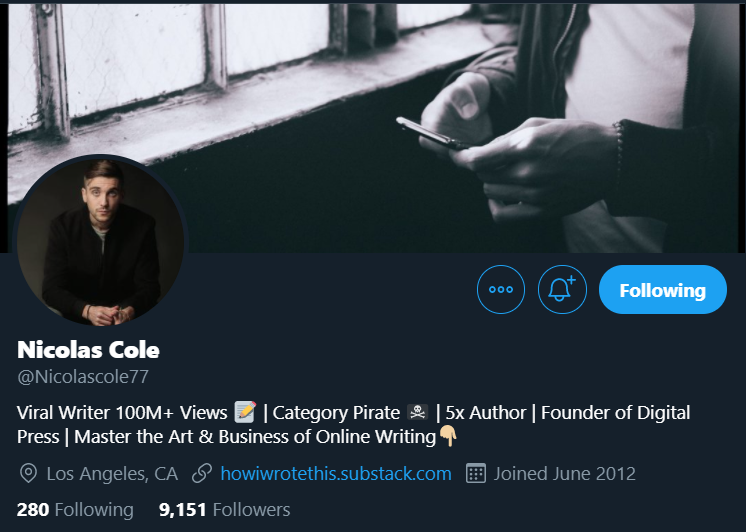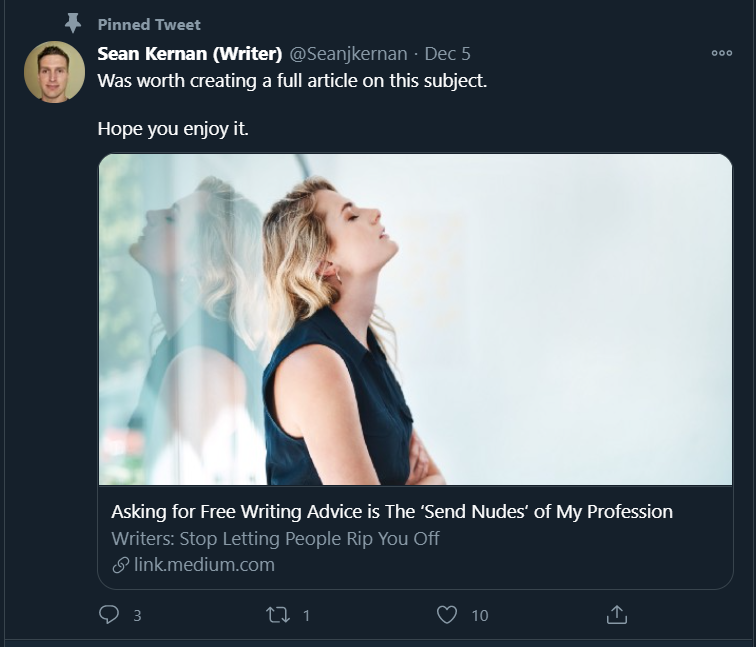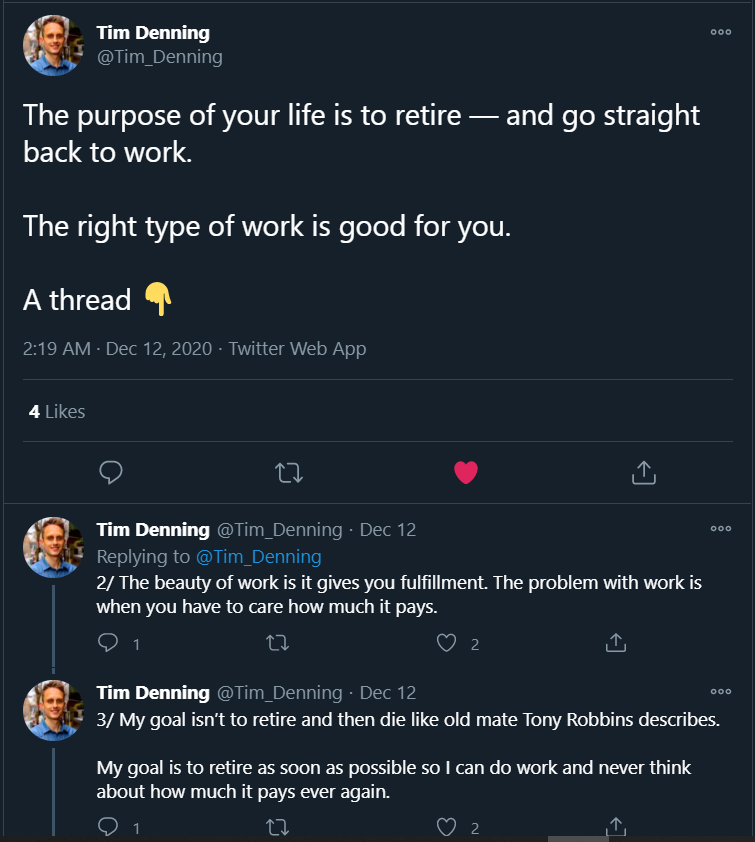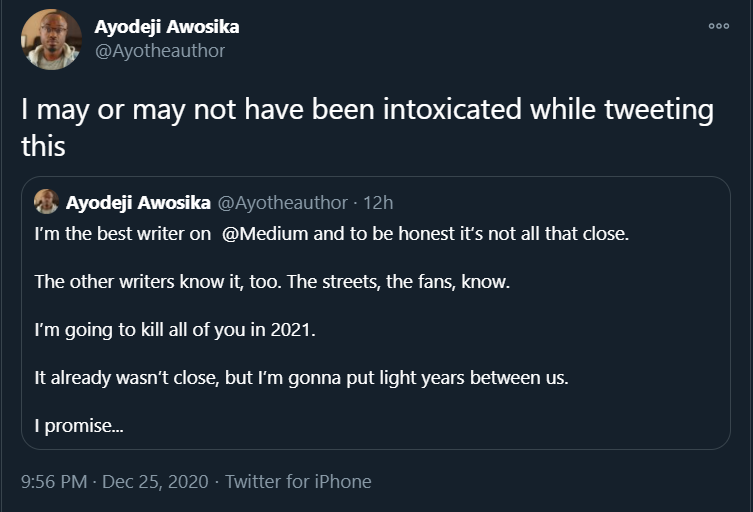How to Use Twitter for Maximum Growth as a Writer
A 7-step guide to making the most of the social media platform with infinite possibilities

A 7-step guide to making the most of the social media platform with infinite possibilities
If you’re a writer on Medium, linking your Twitter to your profile could unlock a universe of infinite possibilities.
First of all, if you link your Twitter profile to Medium, you’ll be tagged on Twitter each time someone shares your article to Twitter. That way, if the Tweet goes viral or people like your article, they’ll know where to find you on Twitter. That someone liked your article enough to share it on Twitter is a wonderful feeling — one you’d miss out on if you never linked your Twitter with your Medium. This is also a great opportunity to grow your following on both platforms.

Aside from that, if you write an article about a celebrity, your favorite author, or brand, it’s a great way to grab their attention by sharing the article on Twitter and tagging them. If they Retweet it, your article will definitely get a lot of views.
If you are relatively new on the platform, it can get a little confusing how to design your profile, what to post, what frequency of posting to maintain, etc. This article discusses eight things you need to keep in mind to make the most of the Twitter-Medium integration. It includes examples from some people who have been doing it successfully and discusses how you can adapt their ideas for your own Twitter profile.
1. Have a High-Resolution Profile Picture
This is the most important. A blurred image is the first thing that will turn users off when they visit your profile. A high-resolution image goes a long way in establishing credibility. If you’re smiling and standing in a confident pose in the picture, you’ll radiate positivity and professionalism. This will make people want to follow you even more.
Bonus points if you use the same picture as you use on Medium. This will help the audience connect your face to your words and will help you build your personal brand.
2. Use the Same Name As You Use on Medium
Preferably, even the same handle. For example, if your profile URL on Medium is @someone, your Twitter ID should also be @someone. That way, even if people aren’t aware of your Medium profile, they can find it easily by typing in the same here.
Having the same name will also help the audience attach the name to the kind of content you post.
3. Have a Bio That Screams Credibility
Add your achievements and credentials in your bio that will give a user some reason to trust you. Have you won any awards or competitions? Has your work been published in some major literary magazines? Do you have a degree from a prestigious university in what you write about? Include all these and anything else you can think about.
Nicolas Cole is a master at doing this. I structured my Twitter bio after taking some tips from the current form of his profile bio.

4. Add a Link to Your Bio of Whichever Product or Service You’d Like to Sell
Adding a link to your Medium profile would most likely be pointless as most of the people who come to your Twitter (at least in the initial stages) would be from Medium. Instead, here’s a strategy I’ve seen most Top Writers follow:
- Add a link to any paid newsletter, ebook, course, or whatever lead magnet you have to attract potential customers in your bio. For example, Nicolas Cole has added a link to his Substack newsletter (screenshot above).
- Since you want to direct new users to your Medium profile, pin your best-performing Medium article on your Twitter profile. This is a neat trick I learned from Sean Kernan.

5. Make Your Popular Articles Into Threads
Condense the main points of your popular articles and convert them to Twitter threads. You can also add a link to the main article in the last Tweet of the thread. Don’t worry about covering every point, as long as the core idea is conveyed within the limited characters.
No one does it better than Tim Denning. Here are some additional useful tricks I learned from Tim’s Twitter threads:
- The first Tweet should explicitly state that it’s a thread.
- Don’t define the end of the thread. For example, write 1, 2, 3, etc. instead of 1/7 or 1/n. That way, if your thread goes viral, you can add a CTA at the end, or keep adding more Tweets to capitalize on the extra views.
- Each Tweet should be complete in itself so that even when people see it out of the context of the thread, it still makes sense.

6. Show Us an Occasional Glimpse of Who You Are Outside of Medium
Even though you rarely steer clear of your niche on Medium, breathe a little on Twitter. Show your audience a glimpse of who you are as a person. You can do this by sharing memes, funny GIFs, Retweeting motivational quotes by celebrities, or even the occasional political opinion.
I love Ayodeji Awosika’s Tweets because they are a mixed bag of sarcastic one-liners, opinions, motivational content, and insightful Retweets.

8. Show Up Every Day
Even if you feel you have nothing new to post, consistency is important. The best part about Twitter is your profile soon overflows with Tweets. It’s not like Medium where you have to worry about maintaining your niche and only producing quality content.
On Twiter, you can post whatever you like. If nothing comes to your mind, go to the profile of your favorite celebrity and Retweet a few of their posts. You can also share cat videos or clips of baby animals. The key here is to post something daily —with a few hours gap in between. Don't pressure yourself into thinking you need to post quality content daily.
Final Words
Have a high-resolution image, use the same name on Medium, and add all your credentials and achievements to your bio to make it appear credible. Apart from that, make careful use of the pinned Tweet — probably to promote your best-performing article on Medium.
Condense your articles into threads and add a link only on the last Tweet. Don’t hesitate to show shades of yourself other than your preferred niche of writing. Readers will not only get a glimpse into who you are as a person, but they will also understand that you’re a human and your interests range a wide number of topics, not just what you write about.
These tips should prove as the starter pack for designing your Twitter profile like a pro. Having a well-structured Twitter profile can go a long way in helping you network and getting you important clients in the future.
Want to stay in touch? Join my email list for more interesting stuff.
